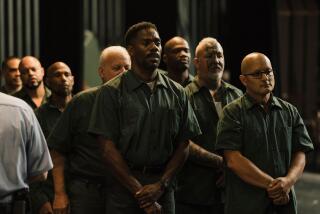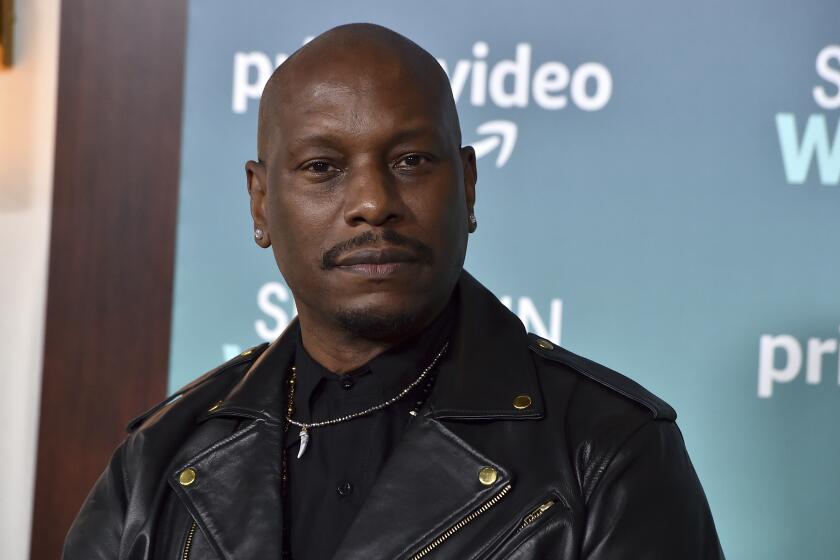A film that goes for the ‘Throat’
By turns funny and sobering, sweeping and intimate, the consistently entertaining “Inside Deep Throat” plays like a giddy prance through the minefield of the last three decades of American sex and politics. It’s a timeless story, really. Bawdy, can-do upstarts raise the vengeful ire of the cynically pious. Swap the X-rated 1972 comedy with a clever 18th century foundling and you’d have “Tom Jones.” Minus the happy ending, of course.
“Inside Deep Throat” was produced by Brian Grazer, whose introduction to the once outrageous, now rather quaint blue blockbuster came, fittingly, via his grandmother. It was directed by Fenton Bailey and Randy Barbato (“The Eyes of Tammy Faye,” “Monica in Black and White”), who have a nose for sniffing out consequence in the outwardly ridiculous. The documentary doesn’t plumb the depths of the movie that inspired it (there are none) so much as it explores the uses to which it was put by interests as diverse and contradictory as the Nixon administration, a newly politically active Christian right, the mob, lefty feminist activists and the then-burgeoning porn industry. It examines “Deep Throat’s” lasting cultural effect and finds it to be not unlike the fertile crescent of the modern culture wars. Both the current zeal to legislate “moral values” and the cynical modern porn industry can be traced to the same event -- the release and unlikely success of what must be the pluckiest and dumbest, in a cute way, porn movie ever made.
An essay constructed from interviews, vintage television footage, movie scenes and cultural ephemera, much of the story is told through the oral histories of people who were involved in the making of “Deep Throat,” the prosecuting of “Deep Throat” and the talking about “Deep Throat” when it was chic to do so. Prominent cultural figures of the era, including Gore Vidal, Norman Mailer, Hugh Hefner, John Waters, Dr. Ruth Westheimer, Alan Dershowitz and Erica Jong, reminisce about the days when the likes of Jacqueline Kennedy could be seen queuing up for a screening of “I Am Curious: Yellow.” Also, the movie’s rather more bewildered director, Gerard “Jerry” Damiano, and his cast and crew (the hilariously debauched production manager, Ron “I approached those films like I was Luc Godard” Wertheim; potty-mouthed location manager, Lenny Camp; and male lead Harry Reems) puzzle over what happened to their lives and careers in the aftermath of the movie’s success. Famed fellatist Linda Lovelace appears only in found television footage; talking to reporters after the smash success of the movie, appearing on Phil Donohue alongside new best friend Gloria Steinem.
The notion that modern independent filmmaking was born out of homegrown porn movies like “Deep Throat” and that the genre itself was a training ground for aspiring filmmakers (which, as Damiano points out, was a new word at the time, especially when linked to the word “independent”) is also trotted out with some bemusement, as are the then young and naive artists’ ideals. In fact, the movie’s soundtrack is made up of ‘70s funk and disco hits that have the effect of both gently mocking their ebullient sexual revolution dreams and taking the air out of blowhards like Charles Keating, an antiporn crusader turned convicted criminal. Not much can be done to make the interviews with the U.S. prosecutor, Larry “I am the Piper” Parrish, funny, unfortunately; or the chilling, ironic familiarity of statements like the one closeted right-wing crusader Roy Cohn hurled at Reems during a TV screamathon: “You talk as though the Bill of Rights was made just for you!”
That, ultimately, it was the stars who suffered in its aftermath (and profited materially not at all) should come as no surprise to devotees of “Behind the Music” and other price-of-fame bio shows. Lovelace, who made about $2,000 for her participation in the film, left an abusive marriage following the release of the movie, remarried, had children, became an antipornography crusader (her testimony for the Meese Commission helped win judges the right to know indecency when they see it, without being held to national standards), attempted a porn comeback in her 50s, struggled to hold down jobs and died following a car crash in 2002. Reems became the first actor ever to be prosecuted by the U.S. government for his connection to the film, hit the skids and found redemption in Jesus Christ and high-end real estate. The now marshmallow-haired, mantis-limbed Damiano, who made the movie with $25,000 in financing secured from organized crime, never saw a dime of the $600 million the film went on to gross.
Bailey and Barbato’s sympathies are clearly with them, the naifs of the story and the big losers in the politically created, media-disseminated morality tale that was “Deep Throat.” For all the ribbing they and other subjects receive at the hands of the filmmakers -- Damiano is shown sitting on his leopard-print duvet, his fragile back to the mirrored wall; the now septuagenarian “swinger count,” Sepy Dobronyi, who lent his mansion as a location, is shown trying out humorous poses while Gary Glitter’s “Oh Yeah” blares -- “Inside Deep Throat” makes it clear that it considers itself both an important lesson in recent history and a cautionary tale. Lately it seems documentaries have been criticized for interpreting events and for trying to make some logical sense out of the glut of disconnected information we’re submerged in every day. To enjoy “Inside Deep Throat” as I did, though, is to be thankful that someone even bothers to try.
*
‘Inside Deep Throat’
MPAA rating: NC-17
Times guidelines: Very explicit sex scenes, including clips from the X-rated film that inspired it.
Imagine Entertainment in association with HBO Documentary Films present a Brian Grazer production in association with World of Wonder, released by Universal Pictures. Directors Fenton Bailey, Randy Barbato. Producer Brian Grazer. Executive producer Kim Roth. Directors of photography David Kempner, Teodoro Maniaci. Editors William Grayburn, Jeremy Simmons. Music David Benjamin Steinberg. Running time: 1 hour, 30 minutes.
Exclusively at Laemmle’s Sunset 5, 8000 Sunset Blvd., West Hollywood, (323) 848-3500, and Landmark’s NuWilshire, 1314 Wilshire Blvd., Santa Monica, (310) 281-8223.
More to Read
Only good movies
Get the Indie Focus newsletter, Mark Olsen's weekly guide to the world of cinema.
You may occasionally receive promotional content from the Los Angeles Times.








